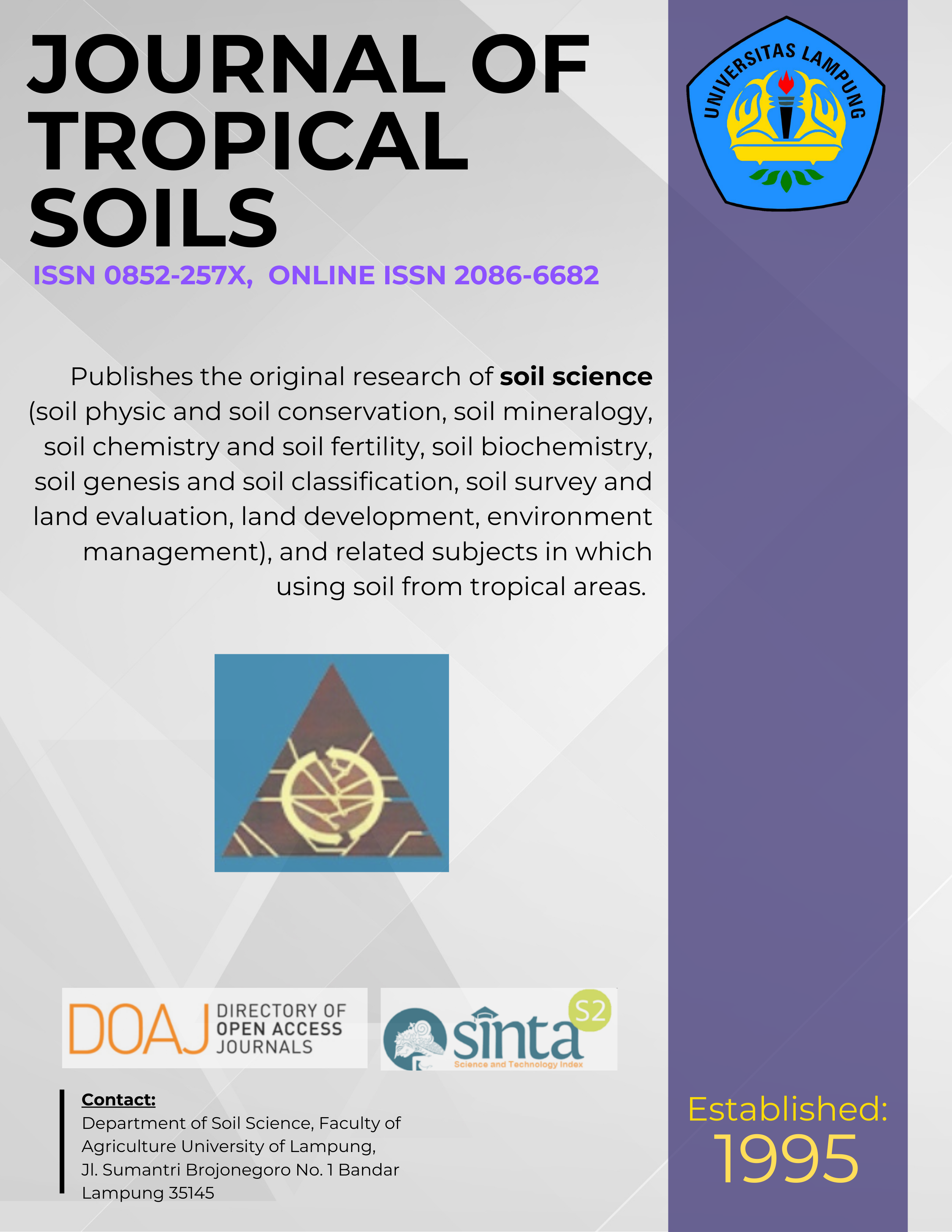Characteristic and Genesis of Black and Red Soil Vertisol in Jeneponto Regency
Main Article Content
Abstract
One of factors that is interasting from Vertisol to be investigated beside the management of the soil fertility was color variations which can vary from gray to brown and brownish red. Exclusive characteristics of Vertisol are shrink swell capacity with clay dominant clay that make agricultural activities in the Jeneponto area less productive. The purpose of this study was to assess the differences of physical and chemical characteristics of black and red Vertisol in Jeneponto R.egency. The research location was based on the difference and overlaying of soil color. Black soils were taken from the village Bontomarannu and Tonrokassi Timur while red soil and overlaying colors of red and black soil were taken from the village Sarroanging. Results showed that one of the chemical characteristic which was very differences between black and red soils were calcium carbonate and base saturation. Generally CaCO3 on black soil was higher (ranged of 13.20-36.73%) than red soil (ranged of 2.21-13.86%). As for overlaying colors of red and black soil were ranged of 2.62-3.88%. The highest base saturation was found in the black soil that was> 100%, red soil between 40-89% and overlaying colors red and black soil between 80-83%. While Fe, Mn and Al concentrations were highest with citrate dithionite bicarbonate extracts followed by oxalate and pyrophosphate extracts. Clay montmorillonite minerals were present in all profiles observed.
Downloads
Download data is not yet available.
Article Details
Issue
Section
Articles
License for Authors
Authors who publish with this journal agree to the following terms:
- Authors retain copyright and grant the journal right of first publication with the work simultaneously licensed under a Creative Commons Attribution License that allows others to share the work with an acknowledgement of the work's authorship and initial publication in this journal.
- Authors are able to enter into separate, additional contractual arrangements for the non-exclusive distribution of the journal's published version of the work (e.g., post it to an institutional repository or publish it in a book), with an acknowledgement of its initial publication in this journal.
- Authors are permitted and encouraged to post their work online (e.g., in institutional repositories or on their website) prior to and during the submission process, as it can lead to productive exchanges, as well as earlier and greater citation of published work (See The Effect of Open Access).
License for Regular Users
Other regular users who want to cite, distribute, remix, tweak, and build upon author’s works, even for commercial purposes, should acknowledge the work’s authorship and initial publication in this journal, licensed under a Creative Commons Attribution License.
How to Cite
Characteristic and Genesis of Black and Red Soil Vertisol in Jeneponto Regency. (2017). JOURNAL OF TROPICAL SOILS, 21(2), 123-128. https://doi.org/10.5400/jts.2016.v21i2.123-128

